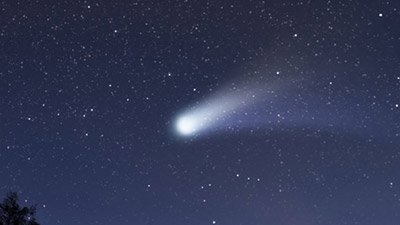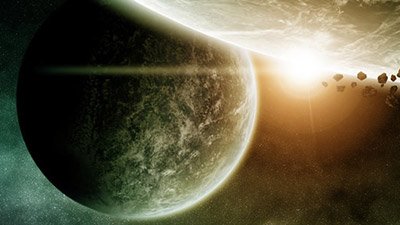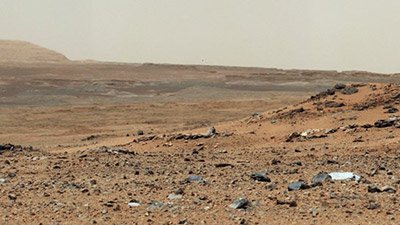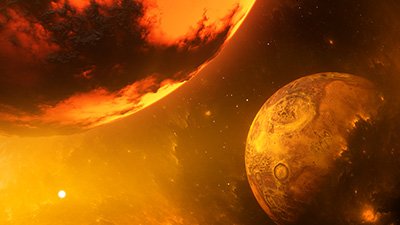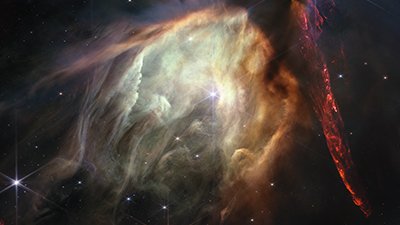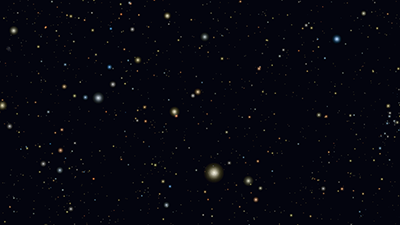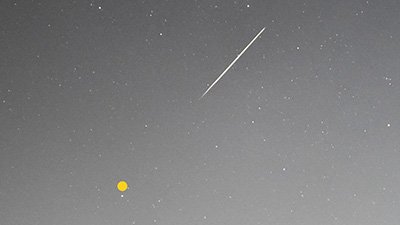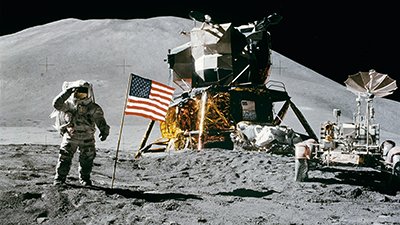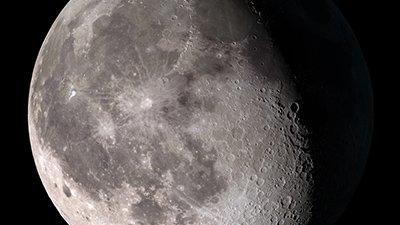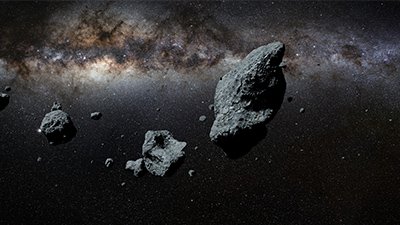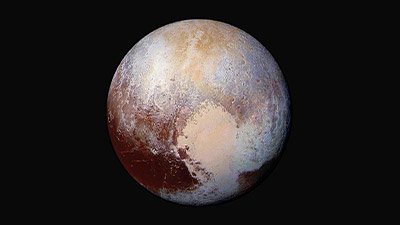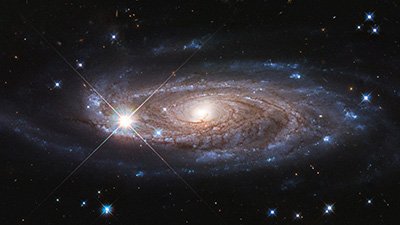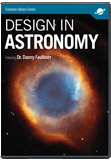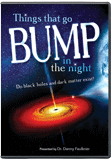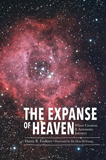Astronomy
The Astronomy of the Bible Has Proven Accurate
It is not commonly known that many of the Bible’s statements about astronomy went against the generally accepted teachings of the time. Modern science, however, has confirmed what the Bible has taught. As in all things, the Bible is absolutely correct when it teaches about the universe.
Was There a Big Bang?
Some professing Christians accept the claim that God used naturalistic processes, including the big bang, to create the universe. Unfortunately, such views deny what the Creator Himself has said about the creation of the universe.
The Origin of the Solar System
There are many problems with the naturalistic explanations of the formation of our solar system. Because the naturalistic ideas are not based on the foundation of God’s perfect Word, they fall short. Will you trust God’s Word or man’s reasoning when it comes to the formation of the solar system?
What About Distant Starlight?
Creationists have good models accounting for why we see distant starlight so “soon” after creation—models that avoid problematic atheistic assumptions (e.g., the Copernican principle) and explain the divine origin of the cosmos.
Some Strange Astronomy Claims
Christians should uphold the highest standards of excellence in their science, questioning all quirky claims and avoiding hasty conclusions, such as the examples described in this article.
Astronomy Topics
-
Age of the Universe
Scientists often proclaim that they have “proved” that the universe is billions of years old, but does the observational science support this assertion?
-
Alien Life
Science fiction has popularized the idea that—somewhere in space—ETs, aliens, and UFOs thrive. Do the Bible and the evidence support this notion?
-
Big Bang
Does observational science support the big bang, the idea that 13 billion years ago all matter came from nothing and eventually formed everything we see today?
-
Black Holes
What are black holes, and are they real? How can we observe them if their gravity is so strong that not even light can escape?
-
Comets
Comets can’t last even hundreds of thousands of years. The bright tail of the comet reminds us that the universe is young—just as the Bible says!
-
Cosmology
How should Christians approach cosmology? Is it a field hopelessly ruled by the secular worldview, or does it proclaim the glory of God and the truth of his Word?
-
Earth
Is the earth unique and special, or is it just one of many similar habitable planets scattered across the universe?
-
Extrasolar Planets
Astronomers are constantly discovering extrasolar planets orbiting distant stars. Are these mysterious bodies other earths with the potential to contain life?
-
Flat Earth
Contrary to common misconception, the medieval church did not teach that the earth was flat, and there are many ways we know that the earth is spherical.
-
Life on Mars
Will life be found inhabiting the rocky, desert-like surface of the Red Planet, our nearest celestial neighbor, Mars?
-
Mars
As rovers and probes are sent to explore the uncharted surface of Mars, the discoveries are exciting. How should Bible-believing Christians view these finds?
-
Moon
The moon, a bright, familiar sight in the night sky, shows evidence of having been carefully fashioned in the recent past.
-
Solar System
What does our solar system, with its planets, moons, and asteroids, reveal about the origin, age, and incredible diversity of the universe?
-
Starlight
How could distant starlight from millions of light years away reach earth if the universe is only around 6,000 years old, as the Bible reveals?
-
Stars
The heavens declare the glory of God, and the brilliant beauty of countless stars certainly declares the handiwork of the Creator God.
-
Sun
The sun, a star situated the perfect distance from earth to supply needed heat and light, shows evidence of special design by a loving Creator.
News About Astronomy
-
March 24, 2025 from Ken Ham Blog
There are an estimated 200 billion galaxies in our universe, and this new study surveyed 263 of them to determine the direction that the galaxies rotate.
Articles About Astronomy
-
Jan. 17, 2025 from Answers in Depth
Comet Tsuchinshan is evidence for a young solar system.
-
Dec. 1, 2024 from Answers Magazine
Did the Bible simply borrow its view of the universe from ancient pagan religions?
-
Nov. 10, 2024 from Answers Magazine
ET isn’t a mystery if you’re willing to examine the data from 60 years of research and take it to its logical conclusion.
-
Oct. 8, 2024 from Danny Faulkner Blog
It’s hard to believe that the total solar eclipse was six months ago. Since then, I’ve watched the sun pass through full phase back to new phase (the only time a solar eclipse can happen) six times.
-
Aug. 12, 2024 from Rocket Science Confirms the Bible
The purpose of this book is to give you a starting point in understanding rocket science from a biblical perspective and how to defend your faith in a currently secular space industry.
-
July 20, 2024 from Answers in Depth
Why it’s important for Christians to reject the moon landing conspiracy theory.
-
April 9, 2024 from Danny Faulkner Blog
Reporting on the April 8 total eclipse
-
April 1, 2024 from Answers Magazine
Evolutionists believe that about 4.5 billion years ago, a Mars-sized planet, called Theia, collided with the earth.
-
March 17, 2024 from Answers Magazine
Since becoming fully operational in 2022, the James Webb Space Telescope (JWST) has been collecting some of the most breathtaking images of the heavens ever seen.
-
Jan. 16, 2024 from Answers in Depth
Flat-earthers assert since no meteors have ever appeared to move upward, the conventional explanation for them must be wrong. Let us examine these two claims.
-
Feb. 19, 2023 from Answers Magazine
The Cassini-Huygens mission vastly improved our understanding of Saturn. The space probe Cassini’s most amazing discovery was the clear testimony to Saturn’s young age and that it had a Creator.
-
Oct. 1, 2022 from Answers Magazine
Starting with a Biblical worldview, Christians can see how scripture defines our role in exploring the cosmos.
-
Sept. 17, 2022 from Answers Magazine
Most evolutionary astronomers talk about the Oort cloud like it’s a fact. Yet they admit no direct observational evidence exists.
-
Aug. 28, 2022 from Answers Magazine
The Bible reveals that creation was about 6,000 years ago, so how can we see stars that are millions of light-years away?
-
March 2, 2022 from Answers in Depth
A biblical overview for why our week is only seven days, how the secular world explains it, and the benefits we enjoy from God’s ordained work-rest weekly pattern
-
Jan. 1, 2022 from Answers Magazine
It’s a wet solar system. Is it also dripping with life?
-
Feb. 23, 2021 from Answers in Depth
An overview of the light travel time problem, how different biblical creationists have addressed it, and the dasha solution to the problem
-
Feb. 5, 2021 from Danny Faulkner Blog
The black swan photo and other similar images are used to commit the informal fallacy of cherry-picking data.
-
Jan. 25, 2021 from Danny Faulkner Blog
How flat earthers cannot accurately account for the December solstice or other celestial phenomena with their zetetic model of the earth.
-
Jan. 2, 2021 from Answers in Depth
Hopefully, 2021 will see the demise of COVID-19 and the many restrictions prompted by concerns about its spread, and so perhaps we soon can get back to normal.
-
Nov. 17, 2020 from Danny Faulkner Blog
The very inaccurate manner with which flat-earthers handle the Coriolis effect and the Foucault pendulum is typical of those in the flat-earth movement.
-
Sept. 4, 2020 from Answers in Depth
Does the Bible teach or demand geocentrism? Hardly. Does good science indicate that the earth is motionless? Certainly not. Then why do some Christians believe otherwise?
-
Aug. 29, 2020 from Answers in Depth
Like geocentrists of old, modern geocentrists are divided as to whether the earth rotates, but they are united in belief that the earth does not revolve.
-
May 15, 2020 from Answers in Depth
Unfortunately, several misconceptions about cosmology have crept into the thinking of biblical creationists.
Bibliography of Creationist Astronomy
This is an introduction to, and announcement of, a new compilation of articles, papers and letters to the editor on creationist astronomy which has been placed on this journal’s website. An explanation of the selection criteria is given.
Bibliography of Creationist Astronomy Bibliography of Creationist Astronomy 2013Recommended Resources

Answers in Genesis is an apologetics ministry, dedicated to helping Christians defend their faith and proclaim the good news of Jesus Christ.
- Customer Service 800.778.3390
- © 2025 Answers in Genesis






